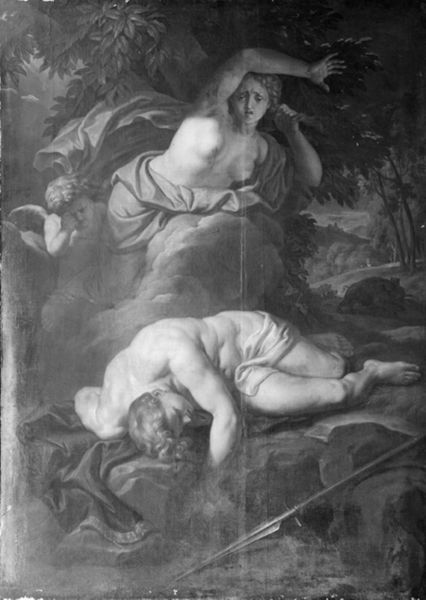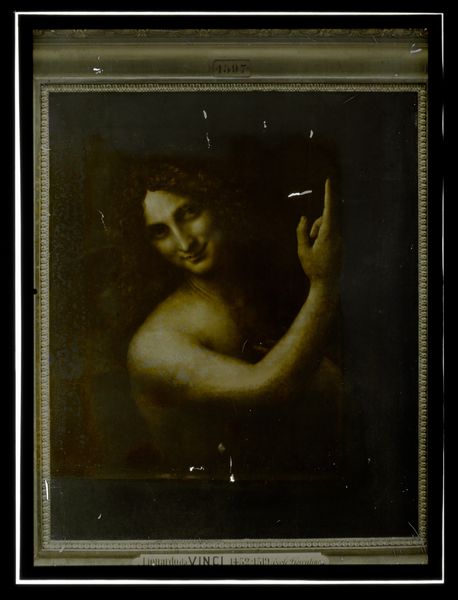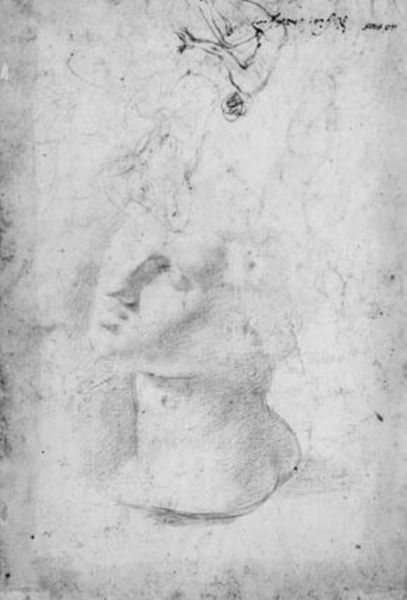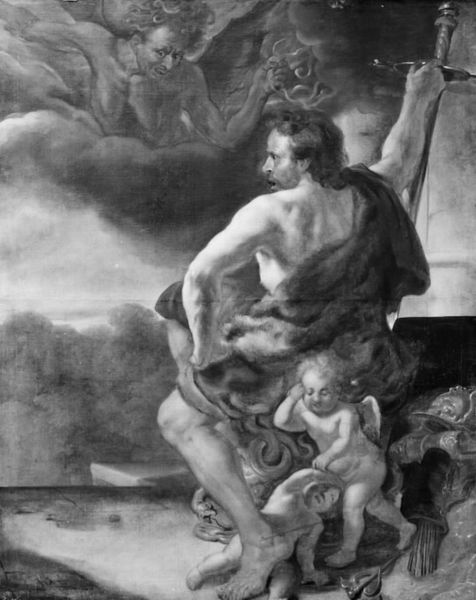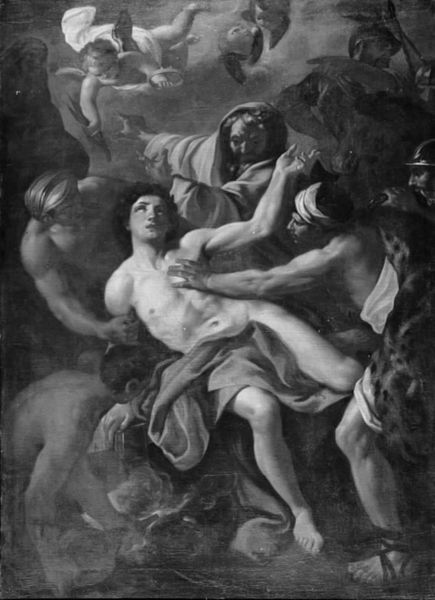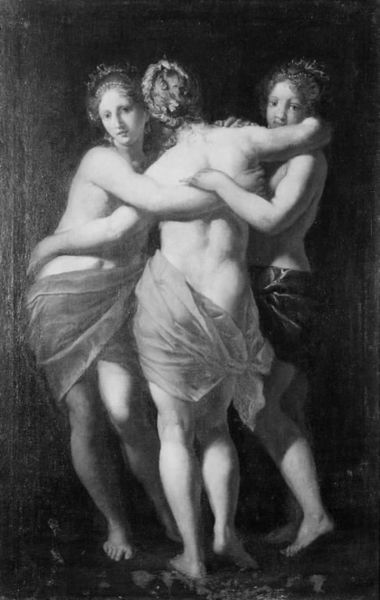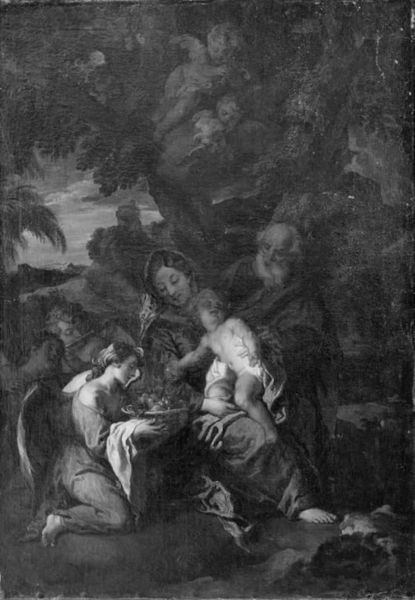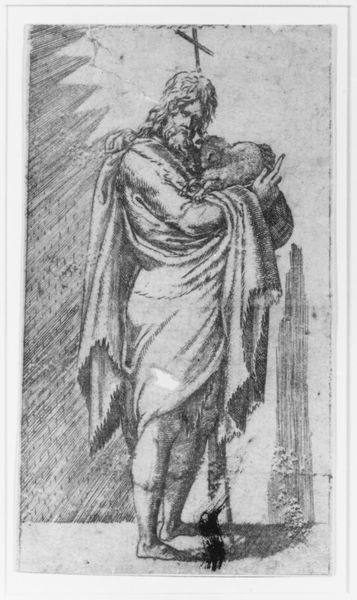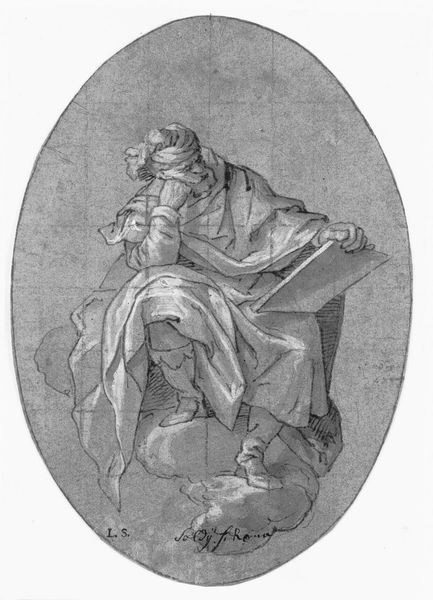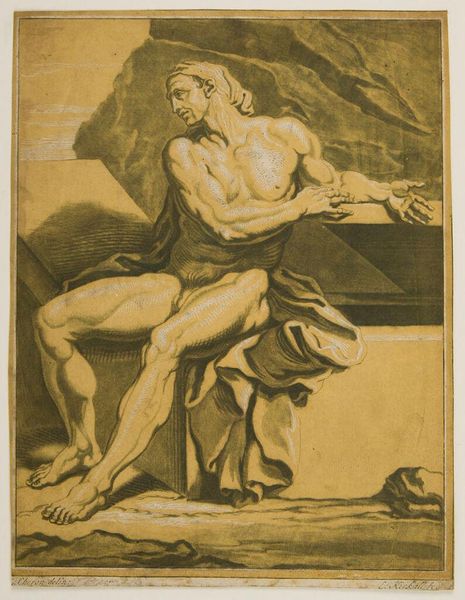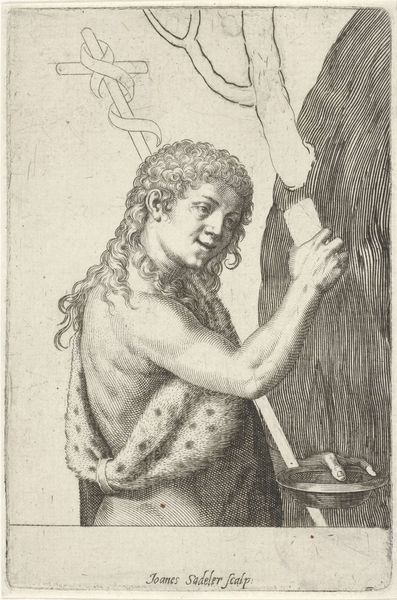
painting, oil-paint
#
baroque
#
portrait image
#
painting
#
oil-paint
#
black and white
#
monochrome photography
#
history-painting
#
monochrome
#
monochrome
Dimensions: 62.5 cm (height) x 49.5 cm (width) (Netto)
Curator: Let’s turn our attention to "The Penitent Mary Magdalene," an oil painting by Francesco Furini, created sometime between 1618 and 1646. Editor: My first impression is one of melancholy and quiet introspection. The monochromatic palette really emphasizes her emotion; she seems lost in thought. Curator: Indeed. The use of monochrome lends it an air of severity that was quite calculated to stir the public imagination. The penitent Magdalene was, of course, a very popular subject in the 17th century. Artists were free to reflect a spectrum of themes through her image: sin and repentance, female suffering, spirituality versus sensuality… Editor: Absolutely. It feels significant to look at it today. There's a weight of societal expectation placed upon women, even in religious contexts, that's immediately palpable in this portrayal. We are not looking just at some representation of repentance, but an examination, filtered through the male gaze, of the burden of societal guilt loaded upon this particular female figure. Curator: And that expectation shaped how art was produced and consumed. Furini, working within the Baroque style, was keenly aware of the performative aspect of religious devotion, especially how that was tied into gender roles. Notice the detail of her upturned eyes and open hand placed near her heart, all crafted to appeal to a very specific, primarily male, viewership and encourage the identification with suffering and redemption. Editor: Yes, that gesture is really interesting in that context. She's both vulnerable and seemingly attempting a claim on her emotional state—and how is she really performing? Are we able to distinguish between authentic experience, faith or forced compliance with what society dictates about contrition for female sensuality? Curator: Those complexities certainly don't resolve themselves. Considering this work through a contemporary lens really challenges us to examine not only Furini's artistry but the persistent dialogues around gender, power, and representation in art. Editor: I think so, too. It’s those unanswered questions that keeps our critical eyes fixed on these older masterpieces. Curator: Precisely, a poignant reminder of the dialogues that art continuously sparks through history and continuing into our present.
Comments
No comments
Be the first to comment and join the conversation on the ultimate creative platform.


